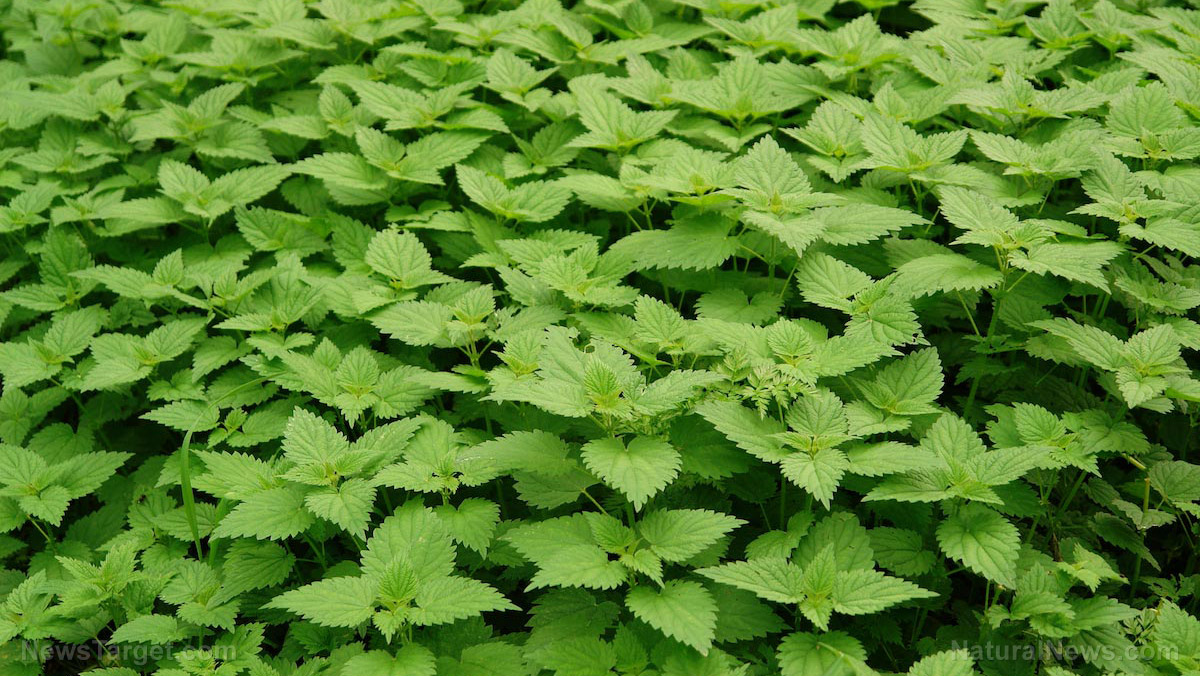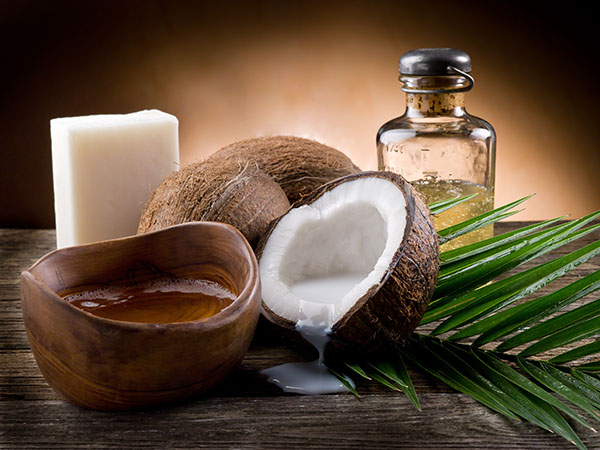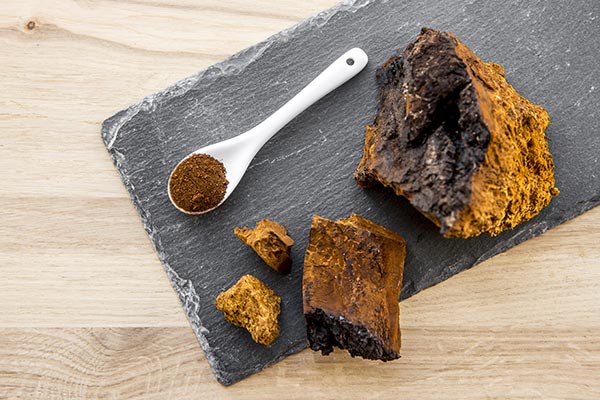Stinging Nettle: A versatile herb with timeless benefits
By avagrace // 2025-04-25
Tweet
Share
Copy

- Stinging nettle, known for its stinging hairs, has been used for centuries across cultures as food, medicine and textile fiber. The ancient Egyptians and Romans utilized it for pain relief and warmth, while its fibers were used to make uniforms during World War I.
- Stinging nettle is rich in vitamins, minerals and bioactive compounds like flavonoids, phenolic acids, carotenoids and plant sterols, all of which contribute to its antioxidant, anti-inflammatory and immune-supporting properties.
- Stinging nettle has anti-inflammatory effects and offers allergy relief, urinary health support, blood sugar regulation and skin benefits. It is also a natural remedy for conditions like arthritis, hay fever and eczema.
- Stinging nettle can be consumed as tea, tincture or capsules or incorporated into dishes like soups, pesto, smoothies and frittatas. It is also used topically in oils and creams for joint pain and skin irritations.
- Stinging nettle is celebrated as a superfood and natural remedy, but consulting a healthcare professional before use is still recommended, especially for those with health conditions or are on medications. Its versatility and nutrient density make it a valuable addition to wellness routines.
Brief history
Stinging nettle has a rich history that spans continents and cultures. The plant is native to Europe, Asia and North America, and its use dates back thousands of years. The ancient Egyptians used stinging nettle to treat arthritis and back pain, while Roman soldiers reportedly rubbed the leaves on their skin to stay warm in cold climates — a practice known as "urtication." In medieval Europe, stinging nettle was a staple of herbal medicine and was used to treat everything from joint pain to urinary disorders. (Related: Nettle root demonstrates its superiority over frontline drugs for prostate enlargement.) The plant’s fibrous stems are also historically significant. During World War I, nettle fibers were used to make uniforms and sails due to cotton shortages. Today, stinging nettle continues to be cultivated and foraged in temperate regions worldwide, thriving in nitrogen-rich soils near rivers, forests and farmland. One fascinating anecdote about nettle comes from the Scottish Highlands, where it was traditionally used to make a hearty soup called "nettle broth." This dish was believed to cleanse the body and boost energy after the long winter months.Nutritional profile and health benefits
Stinging nettle is a nutritional treasure trove, packed with vitamins, minerals and phytonutrients. It is particularly rich in vitamins A, C and K, as well as minerals like iron, calcium, magnesium and potassium. The plant also contains a variety of bioactive compounds, including:- Flavonoids like quercetin and kaempferol, which have antioxidant and anti-inflammatory properties.
- Phenolic acids like chlorogenic acid and caffeic acid, which are known for their ability to combat oxidative stress.
- Carotenoids like lutein and beta-carotene, which support eye health and immune function.
- Plant sterols like beta-sitosterol, which may help lower cholesterol levels.
- Anti-inflammatory properties - Stinging nettle’s flavonoids and phenolic acids can help reduce inflammation, making it a natural remedy for conditions like arthritis, gout, and muscle pain.
- Allergy relief - Stinging nettle has been shown to inhibit histamine production, offering relief from seasonal allergies and hay fever.
- Urinary health - The plant acts as a diuretic, promoting healthy kidney function and reducing symptoms of urinary tract infections.
- Blood sugar regulation - Some studies suggest that stinging nettle may help stabilize blood sugar levels, making it a potential ally for individuals with Type 2 diabetes.
- Skin health - Stinging nettle’s anti-inflammatory and antimicrobial properties make it effective in treating acne, eczema and other skin conditions.
- Tea - Nettle tea is a popular way to enjoy the plant’s nutritional benefits. Simply steep dried leaves in hot water for a soothing, health-boosting beverage.
- Tinctures and capsules - For a more concentrated dose, stinging nettle is available in liquid extract or supplement form.
- Topical applications - Nettle-infused oils and creams are used to soothe joint pain and skin irritations.
Culinary uses
Nettle is known by several common names, including stinging nettle, common nettle and burn nettle. The plant typically grows to a height of three to seven feet, with serrated, heart-shaped leaves and tiny greenish-white flowers. When raw, the leaves have a slightly bitter, earthy taste, but cooking mellows the flavor, giving them a spinach-like quality. For modern culinary enthusiasts, stinging nettle can be used in a variety of creative recipes. Consider trying:- Nettle pesto - A vibrant twist on traditional pesto, made with blanched nettle leaves, garlic, pine nuts and olive oil.
- Nettle soup - A creamy, nutrient-dense soup featuring potatoes, leeks and fresh stinging nettle.
- Nettle smoothie - Blend blanched nettle leaves with banana, spinach and almond milk for a green superfood boost.
- Nettle frittata - Incorporate sautéed nettle into a fluffy egg frittata for a protein-packed breakfast.
- Nettle tea latte - Combine nettle tea with steamed milk and a touch of honey for a comforting drink.
More related stories:
12 Useful medicinal herbs to grow in your home garden. U.S. faces most severe flu season in 15 Years, but dozens of HOME APOTHECARY EARLY TREATMENTS go ignored by the CDC. Get to the root cause: How to recognize and treat common nutrient deficiencies. Essential survival skills you can master in your own backyard. Foraging tips: 17 Wild foods to forage for your winter stockpile. Sources include: Brighteon.ai NaturalNews.com Brighteon.comTweet
Share
Copy
Tagged Under:
superfoods natural medicine functional food alternative medicine natural health natural cures ingredients food science plant medicine organics remedies Stinging Nettle food cures food is medicine goodfood health science
You Might Also Like
Coconut oil: A nutritional powerhouse for health and wellness
By Laura Harris // Share
How pomegranate juice dramatically reversed arterial plaque in landmark study
By News Editors // Share
Baking Soda: The ultimate multi-purpose survival remedy for health, home, and emergency prep
By Finn Heartley // Share
CHAGA: The “king of mushrooms” revered for centuries in traditional medicine
By Ava Grace // Share
Recent News
Coconut oil: A nutritional powerhouse for health and wellness
By lauraharris // Share
How pomegranate juice dramatically reversed arterial plaque in landmark study
By newseditors // Share









